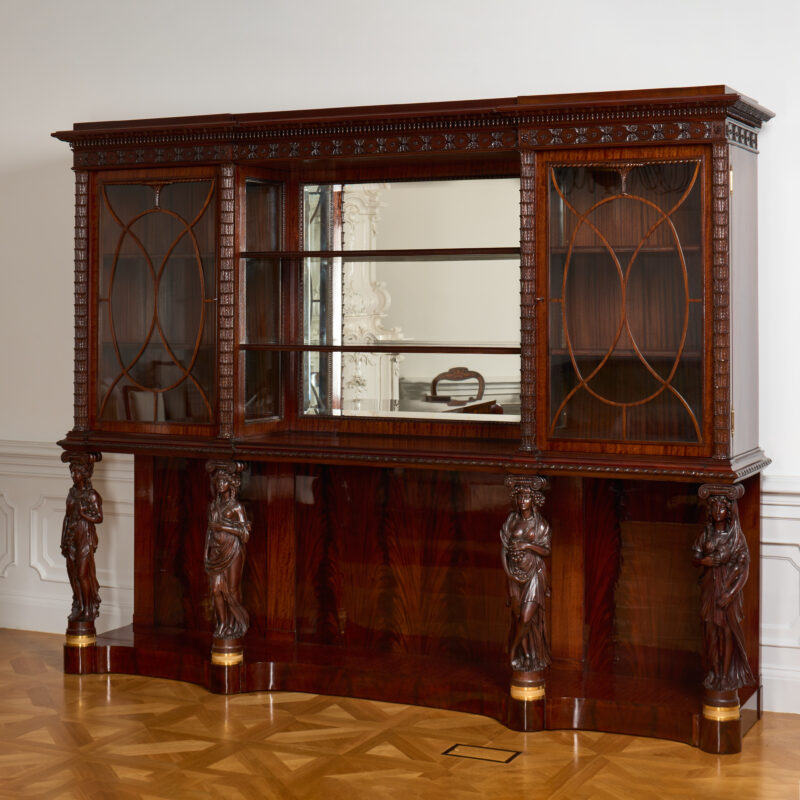
Viennese Mahogany Cabinet
Late 19th Century; Execution very possibly Bernhard Ludwig, Vienna
Sold
Magnificent and Rarely High-Quality Four Seasons Cabinet with Glass Upper Section, in mahogany and pyramid mahogany, with an exceptionally detailed and luxurious design. The base and the back panel of the lower section are beautifully veneered with multiple mirrored pyramid mahogany patterns.
The four columns at the front, supporting the upper structure and topped with a small cornice, are fully sculpted figures representing the four seasons. These figures are of particularly high quality, delicately carved with flowing drapery and finely detailed facial features. The hair and seasonal attributes of the figures are crafted with exceptional precision.The upper section, supported by these four figures, is richly adorned with floral and ornamental carvings. The open central area features a faceted mirror framed with intricate carvings and two fixed shelves.
The two vitrines flanking the central section are glazed at the front and sides, allowing light to flow beautifully into the interior. Each vitrine contains two height-adjustable shelves, with the front edges intricately carved in a wave pattern. The glass doors are bordered by two fully sculpted columns on each side, intricately carved with hundreds of leaves. The glass panels themselves are decorated with elegant, curved wooden ornaments.
The cornice is adorned with a continuous band of floral and leaf motifs. Above this band, numerous fully carved acorns encircle the piece, adding to its elaborate design.
The present salon furniture is certainly remarkable in its craftsmanship and quality.
The Seasons figures are exact replicas of the four figures from the Jewel Cabinet, commissioned by Marie Antoinette in 1787 from Ferdinand Schwerdfeger for her grand apartment.
Unlike the Jewel Cabinet, where the figures are made of gilded bronze and serve as decorative elements, the figures in this Seasons Cabinet are crafted in mahogany and function as supporting columns for the upper section.
This exceptional piece of furniture is likely the work of Bernhard Ludwig, one of the most prominent Viennese cabinetmakers of his era. The design and craftsmanship of this cabinet reflect the refined taste of late 19th-century Vienna and, in particular, the architectural style of the Ringstraße era.
The use of mahogany and pyramid mahogany suggests the distinguished status of its original commissioner. This combination of materials is reminiscent of the avant-garde designs of Adolf Loos, such as the Loos House in Michaelerplatz, Vienna, and the Villa Müller in Prague.
Theophil Hansen, a renowned Ringstraße architect, may have also influenced the design of this cabinet. His works, such as the Palais Ephrussi with its terracotta caryatids and the Neo-Renaissance Palais Todesco, constructed with Ludwig Förster, serve as comparable examples of similar stylistic elements.
This exceptional cabinet, crafted with extraordinary attention to detail and skill, perfectly captures the spirit of Vienna around 1900. Masterpieces like this, created with such care and expertise, are treasures that will continue to delight many generations to come.
Please see a reference image of Marie-Antoinette’s iconic bedroom below. Watch a video HERE.

Viennese Four Season Cabinet
Approximate Dimensions: H: 210 cm, D: 55 cm, L: 265 cm
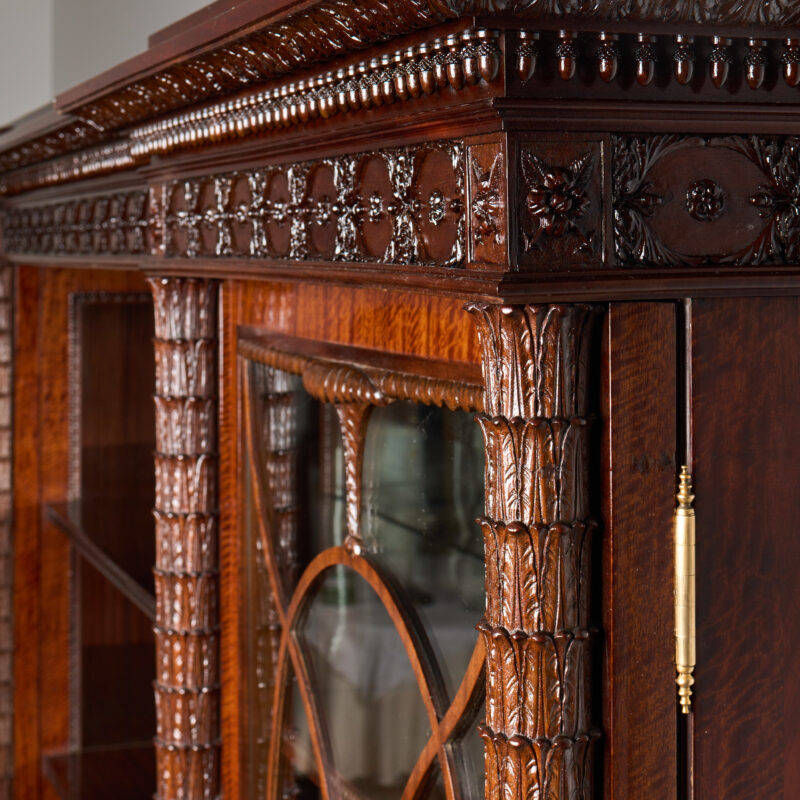
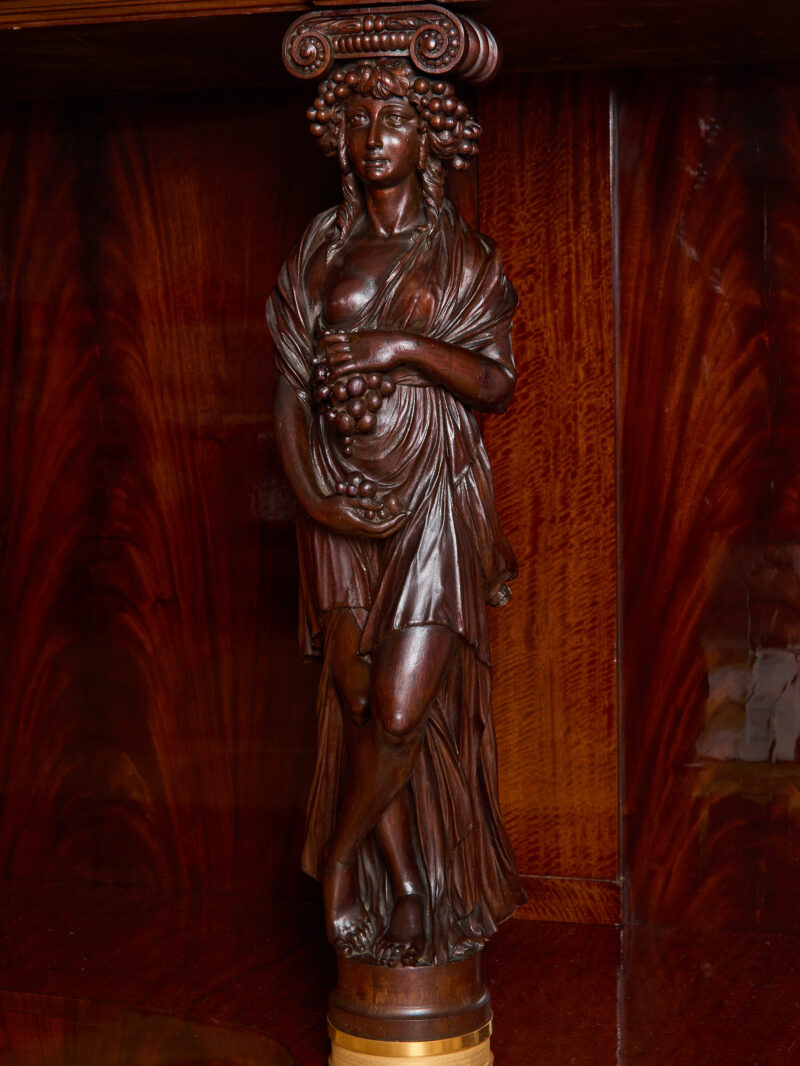

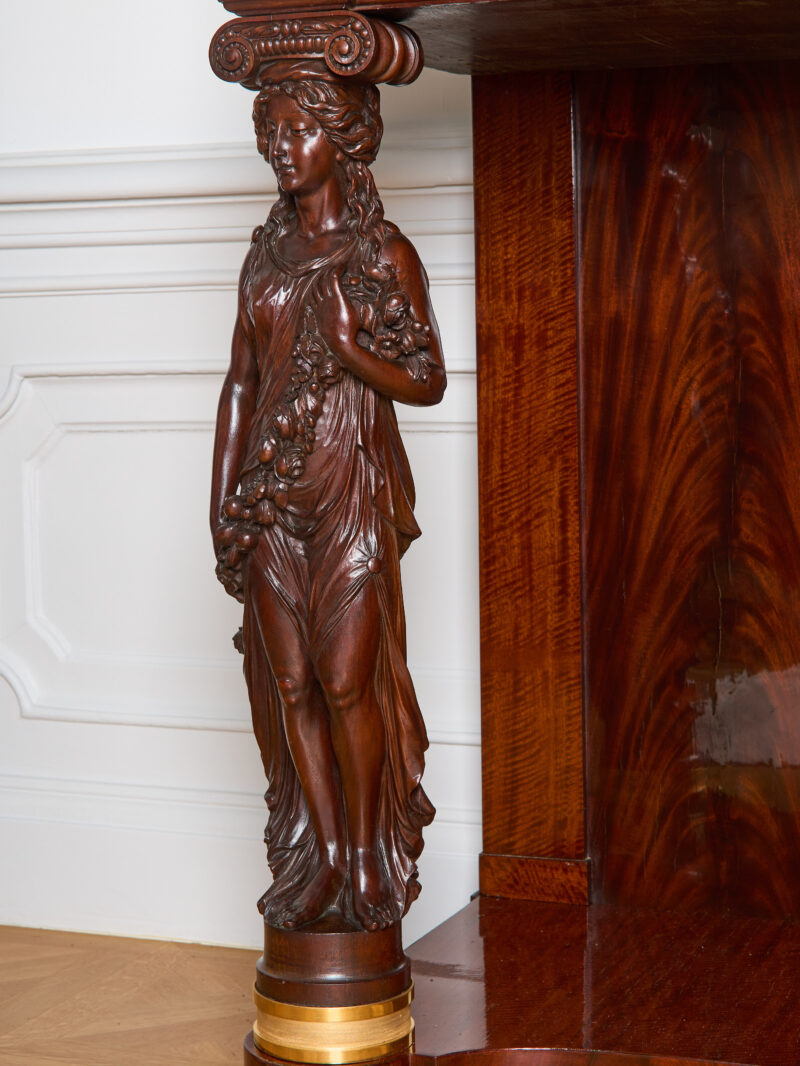
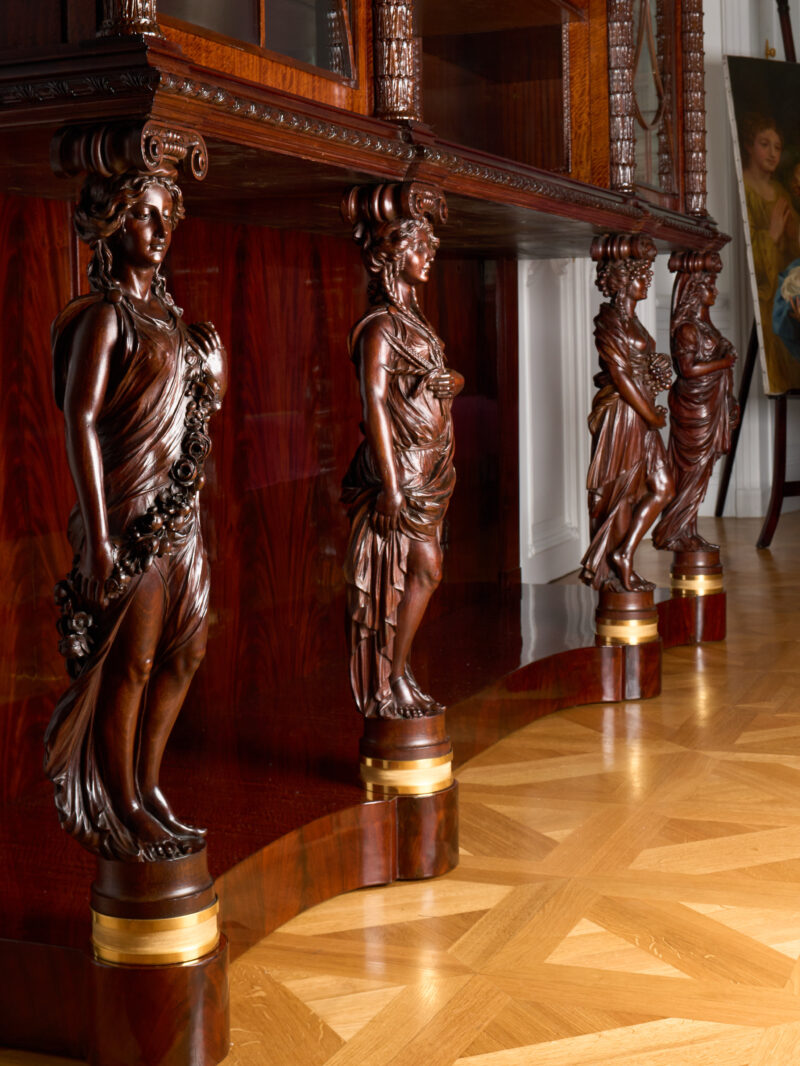
The iconic bedroom of Marie-Antoinette